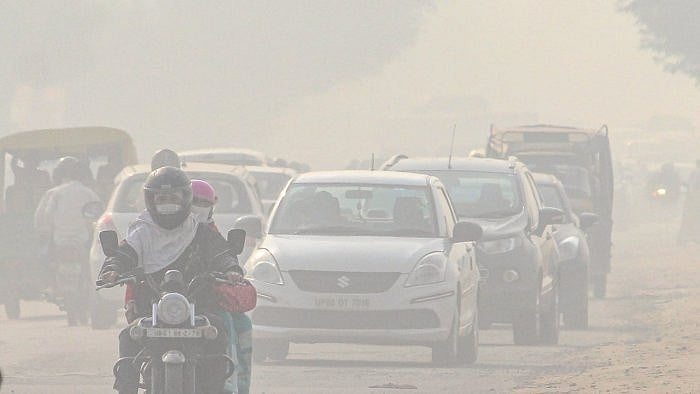
Pollution in India. Representative image.
Credit: PTI Photo
Mumbai: Construction dust, vehicular emissions, and waste processing sites were identified as major contributors to Mumbai's air pollution crisis, according to a study conducted by Respirer Living Sciences, a leading climate-tech startup in India, dedicated to achieving cleaner air and accelerating the transition to cleaner energy.
The report - “Decoding Urban Air: Hyperlocal Insights into PM2.5 Pollution Across Indian Metropolises” - revealed Mumbai’s critical pollution hotspots, with PM2.5 levels in some areas exceeding 100 μg/m3—far above the national safety standards.
In Mumbai, places like Shivajinagar, Kandivali, and Deonar emerged as critical pollution zones, with PM2.5 levels exceeding 100 μg/m3.
The report includes location-specific average CPCB data for November 2024 across 10 Indian cities but goes a step further by integrating hyperlocal monitoring and analysis, providing granular insights into pollution hotspots that traditional systems may miss.
Leveraging hyperlocal data from over 150 sensors deployed across cities, Respirer combined air quality analysis from its AtlasAQ Platform using CPCB monitoring data and overlaid spatial insights from Google Maps Air Quality application programming interface (API). The report provides a 500x500 meter resolution of air quality trends. These innovative technologies revealed pollution patterns offering actionable insights for policymakers, urban planners, and citizens.
Google has partnered with Respirer on the AirView+ initiative to enhance air quality monitoring across India.
“Hyperlocal air quality monitoring is a game-changer for urban India. It bridges the gaps left by traditional systems, offering real-time, street-level insights into pollution patterns. This granularity empowers targeted interventions, making it an important tool in our fight against air pollution,” Ronak Sutaria, Founder and CEO, Respirer Living Sciences said in a press statement.
“"Hyperlocal air quality monitoring bridges the gap between traditional broad-scale assessments and the localised realities of air pollution. By providing fine-grained, real-time data, this approach enables us to pinpoint pollution sources with accuracy and design targeted interventions that can improve public health outcomes,” said Prof Sachchida Nand Tripathi, Chair, Steering Committee, National Clean Air Programme (NCAP) and Dean, Kotak School of Sustainability, IIT Kanpur.